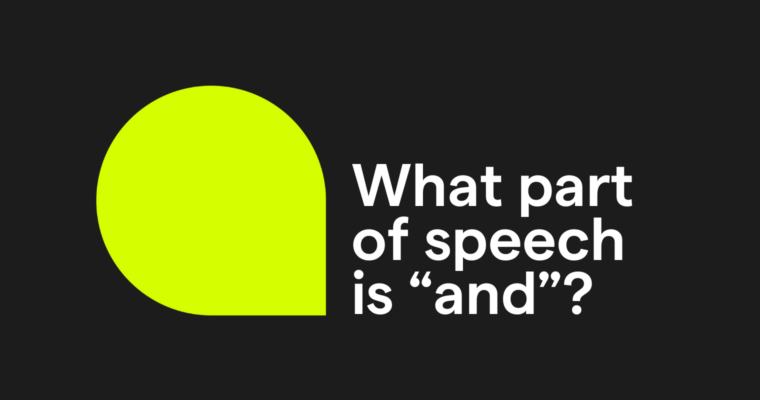
Persuasive writing is any written work that tries to convince the reader of the writer’s opinion. Aside from standard writing skills, a persuasive essay author can also draw on personal experience, logical arguments, an appeal to emotion, and compelling speech to influence readers.
Persuasive writing relies on different techniques and strategies than other written works: In a persuasive essay, it’s not enough to simply inform; you also have to convince the reader that your way of thinking is best. So to help you get started, this guide explains all the basics and provides persuasive writing examples.
What is persuasive writing?
Unlike other forms of writing meant to share information or entertain, persuasive writing is specifically written to persuade, which is to say it convinces the reader to agree with a certain point of view.
Persuasive essays are most closely related to argumentative essays, in that both discuss a serious issue with logical arguments and offer conclusive resolutions. The main difference between a persuasive essay and an argumentative essay is that persuasive essays focus more on personal experience and appeal to emotions, whereas argumentative essays mostly stick to the facts.
Moreover, argumentative essays discuss both sides of an issue, whereas persuasive essays focus only on the author’s point of view. The language and tone in persuasive essays tend to be more conversational as well—a tactic of persuasive speech intended to build a more personal and intimate relationship between the author and reader.
>>Read More: The Only Guide to Essay Writing You’ll Ever Need
Why is persuasive writing important?
For starters, there’s always a demand for persuasive writing in the world of business. Advertising, website copywriting, and general branding all rely heavily on persuasive messaging to convince the reader to become a customer of their company.
But persuasive writing doesn’t always have to be self-serving. Historically speaking, persuasive essays have helped turn the tide in many political and social movements since the invention of the printing press.
As you can see from the persuasive writing examples below, the techniques of persuasive speech can help change or challenge majority beliefs in society. In fact, if you look into any major cultural movement of the last few centuries, you’ll find persuasive writing that helped rally the people behind a cause.
Ethos, logos, and pathos in persuasive writing
There are lots of ways to persuade people, but some methods are more effective than others. As we mention in our guide on how to write a persuasive essay, good persuasive writing utilizes what’s known as the modes of persuasion: ethos, logos, and pathos.
First put forth by Aristotle in his treatise Rhetoric from 367–322 BCE, ethos, logos, and pathos have since become the core of modern persuasive speech and should be incorporated into any persuasive essay. Let’s break them down individually.
Ethos
The ancient Greek word for “character” or “spirit,” ethos in persuasive writing refers to how the author presents themself. Authorities on an issue are most likely to convince the reader, so authors of persuasive writing should establish their credibility as soon as possible.
Aristotle suggests that the author demonstrates their useful skills, virtue, and goodwill toward the reader to present themselves in the best light.
Logos
The ancient Greek word for “logic” or “rationale,” logos refers to using logical arguments and evidential data. A good writer doesn’t rely only on persuasive speech—they also back up their perspective with statistics and facts.
Logos isn’t just about backing up arguments with plenty of research (although that is essential). In persuasive writing, logos also refers to structuring your argument in the best way possible. That includes knowing how to start an essay, progressing your points in the right order, and ending with a powerful conclusion.
Pathos
The ancient Greek word for “suffering” or “experience,” pathos involves an author’s appeal to emotion. As much as we’d like to think of ourselves as logical creatures, study after study has shown that humans tend to make decisions more from emotions than from reason—and a good persuasive writer is well aware of this.
Persuasive speech often “tugs at the heartstrings.” The author might share a personal experience, such as describing a painful event to either win the reader’s sympathy or urge them to consider someone else’s feelings.
Aristotle emphasizes the importance of understanding your reader before employing pathos, as different individuals can have different emotional reactions to the same writing.
Persuasive writing tips and strategies
1 Choose wording carefully
Word choice—the words and phrases you decide to use—is crucial in persuasive writing as a way to build a personal relationship with the reader. You want to always pick the best possible words and phrases in each instance to convince the reader that your opinion is right.
Persuasive writing often uses strong language, so state things definitively and avoid “hedging.” Persuasive writing also takes advantage of emotive language—words and phrases that describe feelings—to encourage the reader to form sentimental connections to the topic.
Wordplay like puns, rhymes, and jokes also works as a good memory tool to help the reader remember key points and your central argument.
2 Ask questions
Questions are great for transitioning from one topic or paragraph to another, but in persuasive writing, they serve an additional role. Any question you write, your reader will instinctively answer in their head if they can, or at least they’ll wonder about it for a moment.
Persuasive writers can use questions to engage the reader’s critical thinking. First, questions can be used to plant ideas and lead the reader straight to the author’s answers. Second, if you’ve presented your evidence clearly and structured your argument well, simply asking the right question can lead the reader to the author’s conclusion on their own—the ultimate goal of persuasive writing.
3 Write a clear thesis statement
A thesis statement openly communicates the central idea or theme of a piece of writing. In a persuasive essay, your thesis statement is essentially the point of view that you’re trying to convince the reader of.
It’s best to include a clear, transparent thesis statement in the introduction or opening of your essay to avoid confusion. You’ll have a hard time trying to convince the reader if they don’t know what you’re talking about.
4 Draw a persuasion map
A persuasion map is like an outline of your argument, designed as a writing tool to help writers organize their thoughts. While there are different formats to choose from, they all typically involve listing out your main points and then the evidence and examples to back up each of those points.
Persuasion maps work great for people who often lose track of their ideas when writing or for people who have trouble staying organized. It’s a great tool to use before you write your outline, so you know everything you want to include before deciding on the order.
5 Speak directly to the reader
As we’ve mentioned above, the relationship between the author and reader is quite significant in persuasive writing. One strategy to develop that bond is to speak directly to the reader, sometimes even addressing them directly as “you.”
Speaking to the reader is an effective strategy in writing. It makes the writing feel more like a conversation, even if it is one-sided, and can encourage the reader to lower their defenses a little and consider your points with an open mind.
6 Repeat your main arguments
Repetition is a classic technique in persuasive writing as a way to get ideas into your readers’ heads. For one thing, repetition is an excellent memory aid, as any teacher will tell you. The more someone hears something, the more likely they are to remember it. In persuasive writing, however, repetition can also influence readers’ way of thinking.
Repeating the same idea over and over essentially normalizes it. When combined with substantial evidence and rationality, repetition can make even radical ideas seem more grounded.
Examples of persuasive writing
As mentioned above, persuasive essays have assisted in many major historical events and movements, often when society was undergoing a significant shift in beliefs. Below are three such persuasive writing examples from different periods of American history:
- Common Sense by Thomas Paine (1776): Not all colonial Americans thought a revolution against England was a good idea. Thomas Paine released this forty-seven-page pamphlet to the general public to convince them the American Revolution was not only a good idea but also an ethical one.
- Declaration of Rights of the Women of the United States by Susan B. Anthony, et al. (1876): Written in the style of the Declaration of Independence, this document outlined the requests of the National Woman Suffrage Association (NWSA). Mentioning the hardships of women and calling out the inequality between genders, this printed pamphlet was distributed illegally at the centennial Independence Day celebration in Philadelphia.
- Letter from Birmingham Jail by Martin Luther King, Jr. (1963): Imprisoned for a nonviolent protest, King wrote this persuasive essay in response to published criticism of the Civil Rights Movement by Southern religious leaders. Although the essay addressed the critics directly, it was simultaneously approachable to anyone interested in King’s point of view.
Persuasive writing FAQs
What is persuasive writing?
Persuasive writing is a text in which the author tries to convince the reader of their point of view. Unlike academic papers and other formal writing, persuasive writing tries to appeal to emotion alongside factual evidence and data to support its claims.
What is an example of persuasive writing?
Some famous examples of persuasive writing throughout history include Common Sense by Thomas Paine, the Declaration of Rights of the Women of the United States by Susan B. Anthony, et al., and Letter from Birmingham Jail by Martin Luther King, Jr.
What are different types of persuasive writing?
While persuasive essays are the most famous example of persuasive writing, the same style also applies to writing in advertising, journalistic op-ed pieces, public speeches, public service announcements, and critical reviews.





